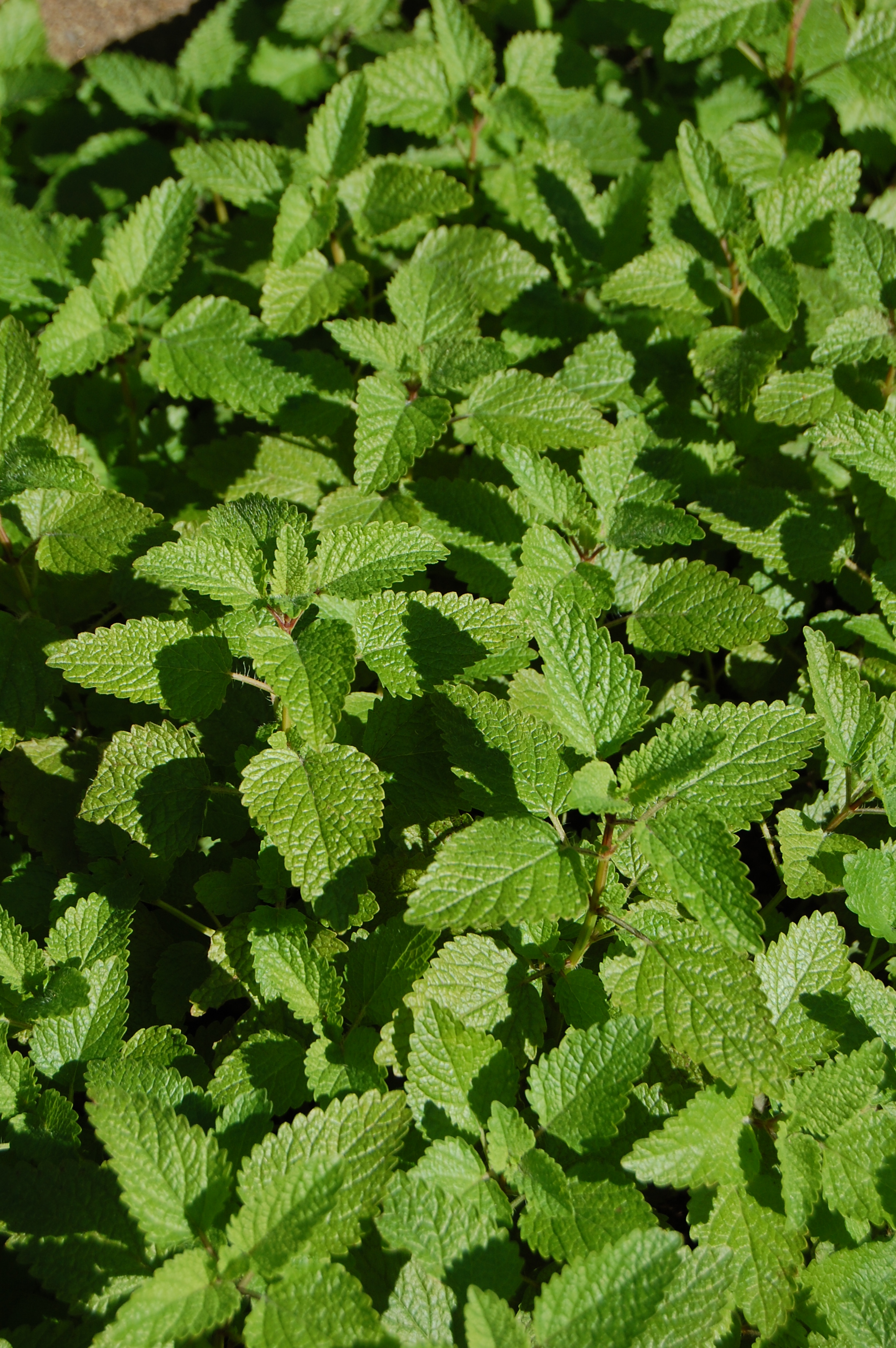
Keeping your plant pruned to a small size will prevent it from flowering and taking over your garden.
Lemon balm (Melissa officinalis) is a member of the mint family. Like mints, it does tend to spread but unlike them, it can be kept at a reasonable size if pruned regularly during the growing season. Be brave and prune it to just a few inches tall several times over the summer. Don’t worry, it will grow back rapidly. It doesn’t spread by runners, rather it reseeds itself aggressively. Keeping it pruned prevents the plant from forming flowers and then seeds. Bees love lemon balm flowers so if you want to use the plant to attract pollinators, be prepared to pull up a lot of seedlings after the flowers go to seed. A thick layer of mulch around your plants will also help. It will prevent seeds and weeds from germinating and keep the soil cool during the summer.

Bees find lemon balm flowers irresistible.
Lemon balm is native to southern Europe and Central Asia but has spread and naturalized around the world. It is most often used to in herbal teas but also has a myriad of other uses. The essential oil is used to makes perfumes. The lemony flavor adds an accent to many chicken and fish dishes. It is also an excellent insect repellent when rubbed on your skin.
It is used medicinally, especially in aromatherapy. The lemon scent is very relaxing. Lemon balm has also been used as a sedative and to treat digestive disorders.
Lemon balm is a perennial that is hardy in zones 5 through 9. It can grow to a height of 2 to 4 feet. In warmer climates, it prefers light shade. The plant dies to the ground after a hard frost. In the spring, it grows again sending up its characteristic wrinkled green lemon scented leaves. The tiny white flowers appear throughout the summer.
Lemon balm is easy to grow from seed. Start your seeds indoors 6 to 8 weeks before your last frost. Surface sow them. Don’t cover them. The seeds need light to germinate. The seeds need a minimum temperature of 70⁰F to germinate. A heat mat can help. Keep the seeds evenly moist. Germination should occur within 10 to 14 days.
You can transplant your seedlings outdoors in your garden after all danger of frost has passed, in late March to mid-April depending on your climate. Plant your seedlings 18 inches apart in partial shade away from other plants.
You can harvest leaves any time during the summer and right up until the frost in the fall. The leaves lose their flavor when dried so they are best used fresh or frozen for winter use. Dried lemon balm retains enough scent that it can be used in potpourri.

